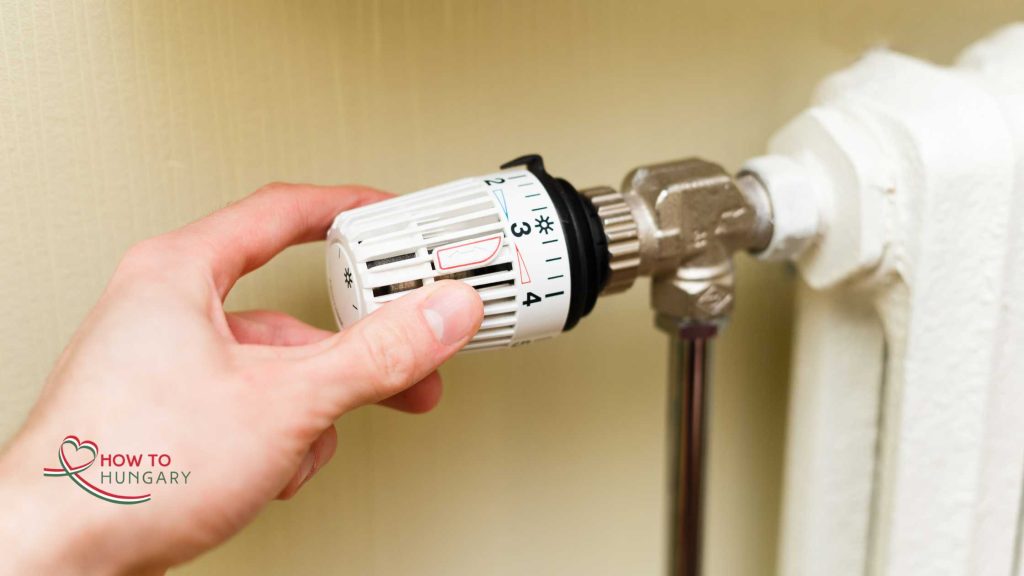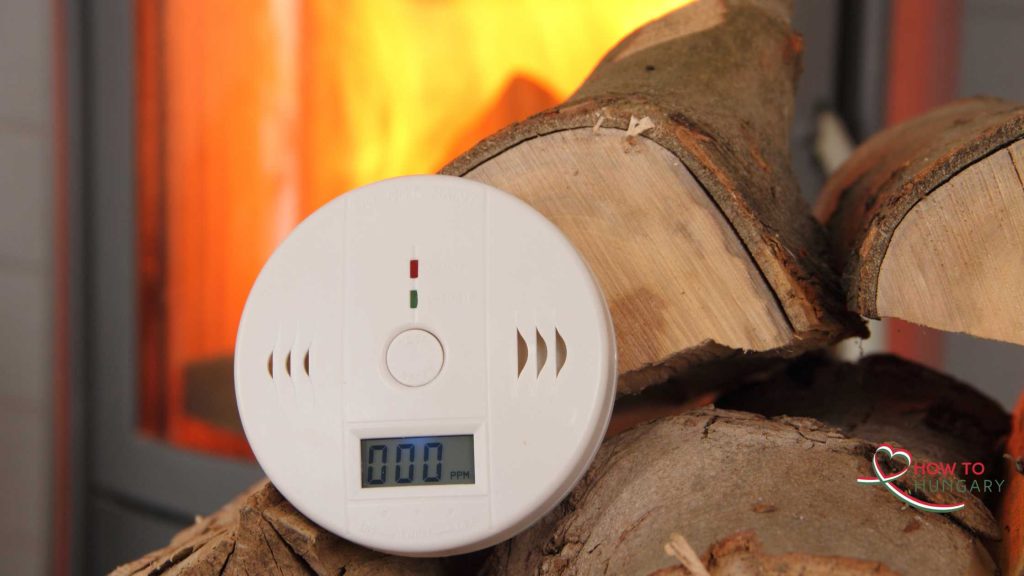It’s mid-August, and in Budapest we’re still wiping away the sweat after the hottest summer on record. Yet, while I’m watering the plants and dodging tiny flying gnats, my thoughts are already turning to radiators, bills, and boiler checks. Such is life here: autumn sneaks up, and suddenly the Hungary heating season in 2025 is upon us.
Officially, Hungary’s heating season begins on 15 September 2025 and ends on 15 May 2026, according to Government Decree 676/2023. (XII. 29.). That doesn’t mean the heating switches on automatically that day in every flat, but it does mean that service providers must make heating available within this window. In short, you’re covered – whether or not the weather justifies it.
Why the dates matter now
If you’ve been around Hungary long enough, you may remember when everyone swore the season ran from 15 October to 15 April. That was once true, but as climate patterns shifted and heating systems modernised, the rules moved forward to cover a longer span.
The official period matters for three reasons:
- District heating obligations – In Budapest and other cities with távfűtés (district heating), providers must keep the system ready between September and May. Whether radiators actually warm up depends on average daily temperatures and collective agreement in a building.
- Billing and subsidies – Government-regulated tariffs and subsidies (such as rezsicsökkentés) tie into these dates. If you’re budgeting, you need to know when you might start paying for actual usage.
- Legal protection – If a cold snap hits in October and your heating isn’t turned on, you have recourse because providers are bound by the official decree.
For expats used to setting their own boiler schedules back home, this centralised approach can feel odd. But it comes with benefits: predictability, shared costs in apartment blocks, and the comfort of knowing your neighbours are shivering – or sweltering – alongside you.

A close-up of a radiator valve with a thermostat knob to keep you toasty this winter.
Preparing for heating season in 2025
Each September, I do the same small ritual: check radiators, call the maintenance man, and quietly brace for higher utility bills. Here’s a simple prep checklist if you’re new to Hungary:
1. Service your heating system
Whether you rely on gas, a condensing boiler, or district heating, schedule an inspection before the first cold front. Not sure who to call if there’s an issue? See my guide on Hungarian Electricity Providers: Who to Call and When. It’ll help you navigate the sometimes bewildering service landscape.
2. Safety first
Hungary has its share of tragic carbon monoxide accidents each winter. If you use gas or solid fuel, invest in a CO detector. These devices are inexpensive, easy to install, and might save your life. My husband, Andrew, integrated this one for us by Shelly .
3. Insulation tweaks
In a Budapest flat, double glazing helps, but don’t underestimate heavy curtains or a simple draught-stopper at the door. In my Balaton countryside house, the old stone walls retain heat beautifully once warmed, but the trick is keeping the chill out in October.
4. Smart control
If you have thermostatic valves, adjust each room to its real use. Why heat a guest room at 23 °C in November? A few degrees difference across the flat can lower bills without lowering comfort.
Common pitfalls to avoid
Heating in Hungary comes with its quirks. Here are the mistakes I see expats make most often:
- Waiting too long for maintenance – The first cold weekend in October is when everyone suddenly calls the boiler man. Book early.
- Not knowing your system – District heating behaves differently from a personal gas boiler. In blocks, neighbours’ decisions matter. In a traditional house, you’re in full control (and full responsibility).
- Ignoring ventilation – Ironically, sealing everything too tightly can cause condensation and mould. Crack a window briefly each day.
- Assuming all properties get the same tariff – They don’t. Your lakcímkártya links you to one primary residence. That property enjoys the regulated household tariff (rezsicsökkentés) up to a capped usage. Your holiday home or second flat, however, is billed at market rates for all consumption.
In practice, this means electricity at Balaton can cost more than the same kilowatt-hour in Budapest. Many locals cut costs by turning off breakers when leaving their weekend house, so they’re not paying premium prices for idle appliances.
During my parents first Budapest winter, they discovered that even with a perfectly maintained system, the central heating in their block followed its own rhythm. The radiators finally came on in late October – just in time for the first proper cold snap – but until then, my father layered sweaters and argued about whether it was “too soon” for the portable heater. It was a quick education in how Hungarian district heating isn’t about your personal thermostat, but about the collective one.
Helpful resources and links
- Official decree and heating season details: Pénzcentrum article (Hungarian)
- Electricity Information: Hungarian Electricity Providers: Who to Call and When
- Gas and heating safety: Read my post on Gas Pipes Budapest: A Family’s Unexpected Ordeal
- General energy safety guidance: Energiaügyi Minisztérium (Hungarian Ministry of Energy) website (for subsidies, efficiency tips, and official updates).

A carbon monoxide detector. The small device that can make heating season in 2025 far safer.
FAQ: Heating season in 2025
Q1: When does the heating season in 2025 start and end?
A1: The official heating season in Hungary for 2025 runs from 15 September 2025 to 15 May 2026, based on Government Decree 676/2023 (XII. 29.).
Q2: Can heating start earlier or end later?
A2: Yes. In apartment blocks with centralised systems, residents can collectively agree to extend heating beyond the official dates. After 15 May, however, providers may charge extra for the service.
Q3: How can I cut costs during heating season in 2025?
A3: Service your system early, use thermostatic radiator valves, and boost insulation. If you have a Hungarian address card, check eligibility for government-regulated tariffs (rezsicsökkentés).
The unofficial start of cosy season
By the time 15 September rolls around, we’ll probably still be in T-shirts, but the comfort of knowing heating is legally available brings a sense of order to the chaos of Hungary’s seasons. For me, the start of the heating season in 2025 also marks the shift from summer laziness to autumn routines – swapping iced coffee for mulled wine, weeks at Balaton for Budapest city markets, and open windows for quietly humming radiators.
If you’re preparing for your first Hungarian winter, or simply want fewer surprises with utilities, property, or paperwork, you’ll find much more in my ebook HOW TO HUNGARY: Budapest & Beyond. It’s packed with lived experience, legal updates, and insider tips. All designed to save you time (and bills). Get your copy here.
I’m ready for the cosy season ahead. Are you?

Anikó Woods is a Canadian-Hungarian writer, technology specialist, and digital strategist who swapped Toronto traffic for Hungarian bureaucracy. She’s the creator of HOW TO HUNGARY: Budapest & Beyond. Since moving to Hungary in 2017, she’s been deep in the paperwork trenches – fact-checking, interviewing experts, and helping others make sense of the madness. Her writing turns chaos into clarity, with a few laughs (and wine recommendations) along the way.

0 Comments